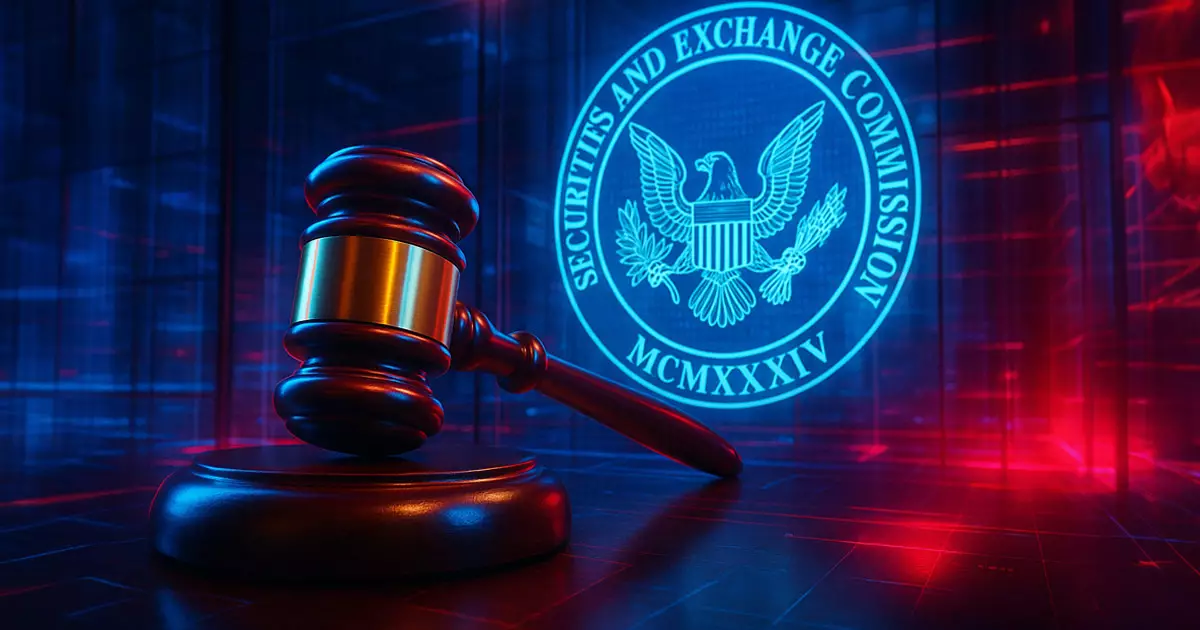Decentralized finance, or DeFi, has emerged as a revolutionary force in the financial landscape, rejecting traditional gatekeeping practices of centralized institutions. Yet, as the industry grows, so do the complexities of regulatory compliance. In this context, the DeFi Education Fund (DEF) recently sent a significant proposal to the Securities and Exchange Commission (SEC) advocating for a set of five core principles to establish a “token safe harbor.” This is not merely a regulatory suggestion; it’s a blueprint for nurturing innovation while safeguarding investors amidst evolving digital asset frameworks.
Embracing Innovation Through Flexibility
The DEF’s proposal underscores the critical need for regulatory bodies to adopt a technology-agnostic stance. By focusing on the principles governing decentralized activities instead of favoring specific systems or protocols, regulators can create an environment where innovation thrives. This approach prevents the stagnation of creativity—a fate that can often befall industries entrapped by rigid standards. For instance, favoring certain blockchain architectures risks boxing in developers, limiting the vast potential that comes from a variety of technological implementations. Regulatory neutrality, then, is not just beneficial; it’s essential for the flourishing of DeFi projects tackling unique financial challenges.
Broadening the Gate to Inclusivity
A remarkably insightful aspect of the DEF’s correspondence is its emphasis on inclusivity within their proposed safe harbor. By advocating for broad eligibility criteria, the DEF aims to ensure that a wide array of projects can strive toward decentralization without the looming fear of being succumbing to premature regulation. Presently, many worthy endeavors are forced to navigate murky waters due to a lack of established frameworks. Opening the door for already-distributed tokens rethinks conventional notions of asset classification and paves the path for a more accessible landscape for creators.
This inclusivity reflects a shift towards an ecosystem where innovation can proliferate. It implies that even projects launched before the establishment of a clear regulatory environment can participate and evolve under the safe harbor. By adopting this broad-minded approach, regulators at the SEC can foster an environment where meaningful, diverse projects thrive rather than simply locking them out due to arbitrary criteria.
Balancing Transparency and Pragmatism
Detailed arguments about disclosure requirements further punctuate the DEF’s initiative. Their advocacy for a balanced approach to transparency—one blending essential material information and the unique challenges faced by nascent teams—strikes an essential note. Early-stage developers grapple with limited resources, and overly burdensome disclosure mandates can quickly become liabilities that stifle creativity and growth.
The suggested parameters, focusing on source code transparency, token economics, governance structures, and cybersecurity, reflect an understanding of the delicate balance between regulatory oversight and practical feasibility. Rather than necessitating unrealistic standards, the DEF advocates for adaptations that enable disclosure to evolve alongside a project’s lifecycle—empowering development teams rather than overwhelming them.
The Path to Decentralization: An Exit Test
One of the most groundbreaking elements in DEF’s proposal is the concept of an “Exit Test.” This pragmatic criterion sets benchmarks to determine when a project has sufficiently decentralized, thereby disassociating it from the traditional securities framework. With benchmarks like permissionless participation and user custody of assets, the Exit Test envisions a future where true decentralization equates to investor protection. The framework must set realistic timelines for projects, pushing them to meet these benchmarks without creating excessive pressure.
The stipulated time frame of three to four years for compliance offers a practical horizon for projects, encouraging real progress rather than merely checking compliance boxes. In this rapidly evolving market, it’s critical that the SEC remain sensitive to the fluid nature of these projects, allowing for extensions in good faith efforts where necessary. A flexible yet firm regulatory framework can ultimately lead to sustainable growth.
Protecting Market Participants: A Win-Win
Another pressing element within the proposal is the need for protections for secondary market participants. By exempting intermediaries from burdensome registration requirements while tokens remain within the safe harbor, the DEF suggests a forward-thinking route toward reducing legal uncertainties in decentralized exchanges. This aspect not only aligns with the industry’s core ethos of democratizing finance but also creates opportunities for broader market participation.
The implications here are profound. Allowing infrastructure providers to operate outside conventional securities regulations mitigates legal risks and spurs participation in decentralized markets, directly benefiting both developers and investors alike. By creating a welcoming atmosphere for novel platforms to flourish, such legislation could catalyze significant advancements in DeFi, ultimately translating into a more robust financial ecosystem for all.
As the SEC continues to grapple with the challenges posed by DeFi, the DEF’s call for a carefully structured token safe harbor should not be dismissed. A nuanced regulatory approach, founded on the principles of inclusivity, transparency, and innovation, could transform the digital asset landscape in a way that makes space for the incredible advances that lie ahead.
















Leave a Reply